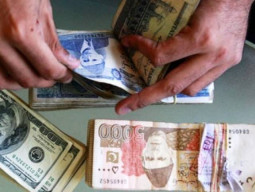
ISLAMABAD: Together with 400 unpublished photographs of embroideries chosen from his own collection, Turkish archaeologist Alper Yurdemi on Monday presented a short history of Ottoman embroideries and shared the results of his studies regarding embroidery techniques and materials as well as the meanings attributed to the patterns in the embroideries.
He was delivering a lecture on the topic of ‘Ottoman Embroideries, Meeting Point of Ottoman Palace and Popular Culture’ at the Heritage Museum at Lok Virsa Complex, Shakarparian. The lecture was organised by the National Institute of Folk & Traditional Heritage (Lok Virsa) in collaboration with the Turkish embassy. It was the first time Yurdemi has given a lecture outside of Turkey.
Yurdemi, who studied art history and archeology at Ankara University and holds an MA in archaeology, introduced samples from the 17th to the 19th centuries, including 50 examples of Ottoman palace embroideries. “Embroidery has remained a tradition which passed from mothers to daughters,” he said.
After beginning collecting examples of Turkish handicrafts at the age of eight, Yurdemi currently has around 9,000 items in 17 separate collections. “My mother helped and encouraged me a lot,” he said, adding, “These pieces are not just a part of Turkish culture but also a part of our global heritage.”
Among them was the ottoman embroideries collection, which includes 1,300 items and was the largest collection of its kind in Ankara.
Lok Virsa’s Executive Director Shahera Shahid said that 2014 was being celebrated as Pakistan-Turkey Cultural Year, adding that people of both the countries enjoy cordial relations and the people of both the countries consider each other as brothers.
She said that the mandate of Lok Virsa includes research, collection, documentation, preservation and dissemination of Pakistan’s traditional culture, both tangible and intangible, adding that Lok Virsa was also grateful to the Turkish embassy for bringing these celebrations to it premises.
Shahid said that both countries share similarities in arts, crafts and cultural heritage, as one can easily find the influence of Turkish culture in a number of Pakistani crafts such as ceramics, blue tiles, woodwork and others. She added that embroidery was not famous among the young and old, and that the designs and colours can reflect the different regions and provinces of Pakistan.
At the end of the lecture, Yurdemi revealed that he was also writing a book on Ottoman embroideries and the meanings of the patterns in the embroideries. While showing a photograph of his son and daughter clad in embroidered clothes, he said that his seven-year-old daughter had started collecting embroidered pieces when she was five. “I hope my children take forward this heritage to the world.”
The lecture was attended by a large number of students, researchers, cultural experts from different universities as well as staffers from Turkish embassy and Lok Virsa.
Published in The Express Tribune, November 11th, 2014.















































COMMENTS
Comments are moderated and generally will be posted if they are on-topic and not abusive.
For more information, please see our Comments FAQ